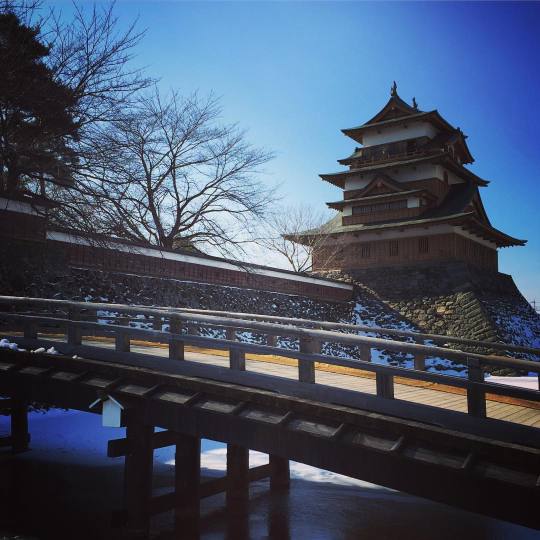#kamisuwa
Text

New Geigi in Kamisuwa Onsen: on First March 2024, Miyoharu (美代遥) debuted in Kamisuwa Onsen, Ote Kenban (大手見番). The first new Geigi in a very long time. Ote Kenban had suspended its activities in the past, but with the debut of the new Geigi, picked up business again. Good to see that the Hanamachi Culture in Kamisuwa has been revitalised!
I'll update this post with more infos as I find them.
According to this article, Miyoharu is 20 years old. Ote Kenban was inactive for the last four years.
In this article, you can see more pictures of her outfit.
42 notes
·
View notes
Link
Kamisuwa Onsen Hamanoyu Whether you're a tourist or traveling on business, Take advantage of a wealth of unrivaled services and amenities at Wear your favorite outfits again and again thanks to the dry cleaning service offered at What's better than a good cup of coffee? Start every vacation day at the ryokan with an energizing cup of quality coffee. Throughout your stay, choose from a variety of delicious dining options at the ryokan. Once there, be sure to check out karaoke rooms and nightclub for some in-house nighttime fun. Vending machines are on 24 hours a day, so you can grab a snack at any time of day or night. The ryokan even has in-house cooking amenities such as shared kitchen for its most selective guests. Throughout the day, you can enjoy the activities offered at Venture outside the ryokan and explore Suwa. Learn about the city's art history with a day at Suwa Garasu no Sato located 3.8 km away, where you can see collections by famous artists. Photograph yourself...
0 notes
Text
Japan Trip. Sake Masumi with a long history in Nagano, Yawaraka, Kaya, Arabashiri, the most delicious fried oysters.
Japan Trip. Sake Masumi with a long history in Nagano, Yawaraka, Kaya, Arabashiri, the most delicious fried oysters.
Taking a break every once in a while and having a drink by myself
I bought two bottles of sake from the last Nagano Masumi brewery. One of them is called Shinshu “Arabashiri” and the other is called “Kaya”.The “Kaya” is similar to the “Shistukoku” that I drank last time, and is packaged in a box so that the two are close together in a drinking set. Since I drank the “Shistukoku” last time, I…
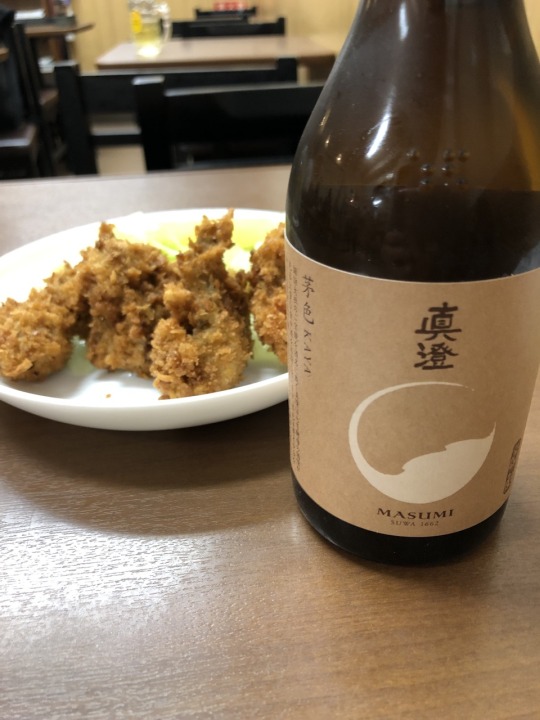
View On WordPress
#brewery#crazy#English#Fried#geek#home#How to#Japan#Japanese#Japanesesake#Kamisuwa#Kaya#local#Masumi#Nagano#New#Oysters#population#restaurant#sake#sushi#Tokyo#tourism#tourists#travel#travels#What#Year#yummy
0 notes
Photo
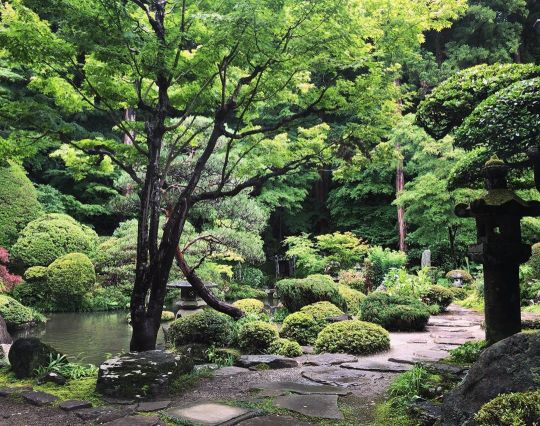
\おにわさん更新情報📸/ [ 長野県諏訪市 ] 地蔵寺庭園 Jizoji Temple Garden, Suwa, Nagano の写真・記事を更新しました。 ーー石鳥居からの水流が美しい、信州の隠れた名園。 #日本百名庭園 の池泉回遊式庭園、『清水之飛泉』の庭。 ・・・・・・・・ あわせて同じ上諏訪の寺町にある『貞松院』というお寺も更新。 4枚目の写真だけ貞松院の枝垂れ桜🌸の説明写真。諏訪市指定天然記念物になっている樹齢四百年のシダレザクラのある池泉庭園が、例年春に特別公開されています(自分はそれ以外の時期に訪れたので拝観がかなわず…)。今年も実施予定だそう。信州の方はこの春ぜひ。 越後高田藩主 #松平忠輝 公の墓所もあります。 そして地蔵寺。高島藩三代目藩主 #諏訪忠晴 が高島城🏯の鬼門除けの祈願寺として現在地に移された曹洞宗の禅寺。境内の奥にある #池泉回遊式庭園 は諏訪市天然記念物・名勝に指定されています。 何の媒体によるものか不明ですが…“日本百名庭園”にも選定。 2019年夏のアウェー松本戦ついでの信州庭園巡り。上諏訪のゲストハウスで一泊した足で諏訪周辺の庭園も巡りました。 「愛宕山地蔵寺」の創建は安土桃山時代の1584年(天正12年)。当初は #諏訪頼忠 により金子城の鬼門除けとして建立され、その後1689年(元禄2年)に上諏訪の高台部の現在地に移転。境内からの諏訪市街地の眺めも良き! 拝観料を納めるポスト📮に志納を入れた後は自由拝観。この庭園はこの地に移転されたのにあわせ作庭がはじまり、江戸時代中期初頭(1700年代前半?)に完成したものと推定されています。日本百名庭園の正体はわからないけど――こちらは本当に素晴らしい庭園だった! 作庭当初はあまり植栽がなく現在よりも石組が目立ったそうだけれど、現在は現在でとてもお手入れが行き届いている庭園。 塩尻の『長興寺庭園』のお手入れもきれいだったけれど、刈込みの感じとか同じ造園会社・植木屋さんが入っているのかなあ? 訪れた時は本堂側から縦長の池泉を眺めるのがビューポイントなのかなと思っていて――奥に見える石鳥居⛩から滝が落ちている姿も眺められるし、左右からマツやモミジが斜めに掛かっていることで視点が自然と中央に寄る。 なんだけど、かつては築山が強調されていたと説明板にはあるので――書院側から池泉を横長にして観るのがビューポイントだった?そう思うと書院から来た時の踏分石はすごく大きいし、そこから築山を見ると枯滝石組が見える。 どちらが正解?どちらも正解で良いんじゃないか(雑)。 石鳥居側から庭園越しに見る本堂も、築山から眺める庭園も絵になる!護岸石も大きいものが多いし自然石による石灯籠をはじめとして色んな石造物が楽しい。 個人的に京都の『大寧軒庭園』の三連鳥居にかなり心持ってかれているので、この庭園の奥の石鳥居の姿もすごく好きだし、モミジも多いから紅葉時期はめちゃめちゃ美しいんじゃないか……?🍁いつか秋にも訪れたい! 〜〜〜〜〜〜〜〜 🔗おにわさん記事URL: https://oniwa.garden/jizoji-temple-suwa-%e5%9c%b0%e8%94%b5%e5%af%ba%e5%ba%ad%e5%9c%92/ ーーーーーーーー #庭園 #日本庭園 #garden #japanesegarden #japanesegardens #zengarden #諏訪 #諏訪市 #suwa #上諏訪 #kamisuwa #信州 #長野 #長野県 #nagano #高島藩 #寺院 #寺社仏閣 #temple #おにわさん #おにわ旅 (地蔵寺) https://www.instagram.com/p/B-EAKqog0Hs/?igshid=b00kaz816s4w
#日本百名庭園#松平忠輝#諏訪忠晴#池泉回遊式庭園#諏訪頼忠#庭園#日本庭園#garden#japanesegarden#japanesegardens#zengarden#諏訪#諏訪市#suwa#上諏訪#kamisuwa#信州#長野#長野県#nagano#高島藩#寺院#寺社仏閣#temple#おにわさん#おにわ旅
0 notes
Photo

レトロなクスリ屋さん 〜 謎の後ろの2文字隠し 〜 Retro drugstore ~ Mystery behind the last two characters ~ #RetroDrugstore #Retro #Drugstore #Mystery #BehindTheLastTwoCharacters #レトロなクスリ屋 #レトロ #クスリ屋さん #謎の後ろの2文字隠し #謎 #ミステリー #後ろの2文字 #Japan #nagano #kamisuwa https://www.instagram.com/p/B0rvsQ_A0V0/?igshid=reayqq2q7274
#retrodrugstore#retro#drugstore#mystery#behindthelasttwocharacters#レトロなクスリ屋#レトロ#クスリ屋さん#謎の後ろの2文字隠し#謎#ミステリー#後ろの2文字#japan#nagano#kamisuwa
0 notes
Photo

Kamisuwa by ubic from tokyo 長野県 上諏訪 Kamisuwa, Nagano Prefecture SONY RX1 http://flic.kr/p/SRNkpu
17 notes
·
View notes
Photo
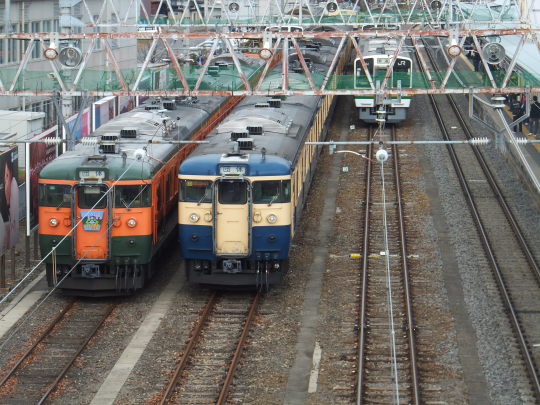
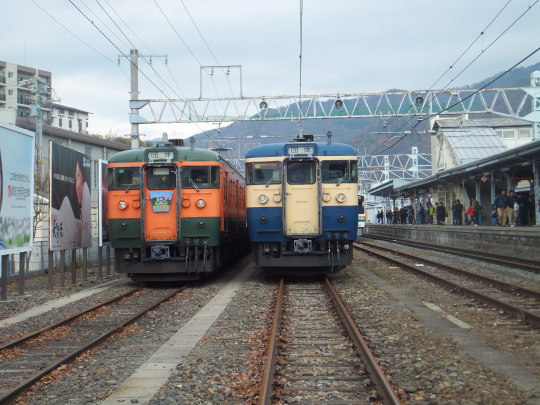
ありがとう中央本線青柳~岡谷駅開業110周年号
上諏訪駅 Kamisuwa Station
長野県諏訪市 Suwa-shi, Nagano, Japan
2015/11
❤️Stay Healthy❤️
25 notes
·
View notes
Photo

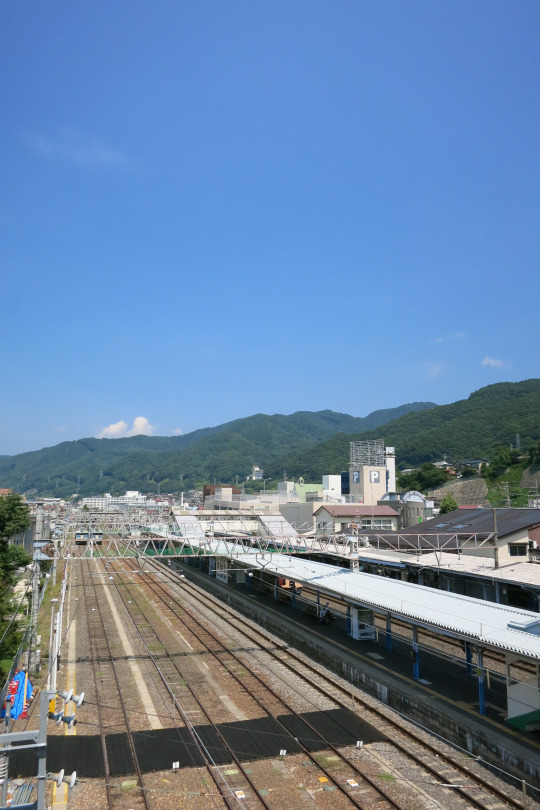
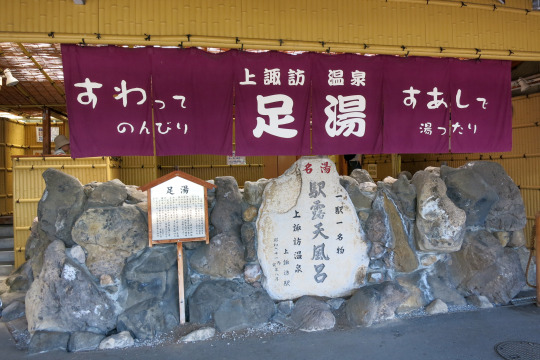

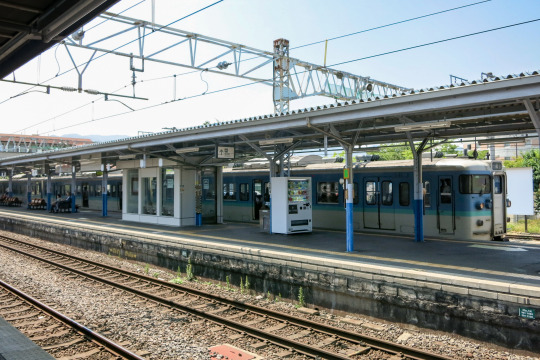
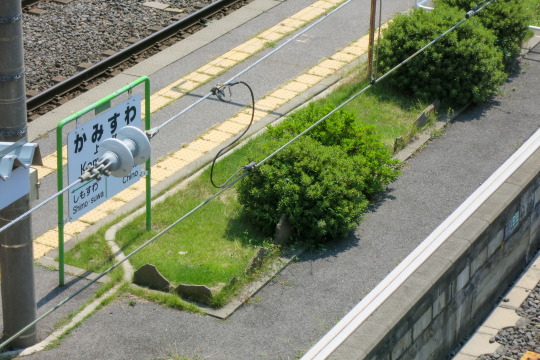
2013.8.29 JR中央本線 上諏訪駅
Kamisuwa Station
14 notes
·
View notes
Text
What’s In a Book? Part 29
While going through my collection I managed to find a few books that have yet to be featured on here yet. I decided to go with this one as, upon further review, I noticed that it actually contained a wealth of information that I had previously ignored ^^;

Image of book’s cover courtesy of myself.
Hana Akari: Showa Meigiren (はなあかり: 昭和名妓連) - Brilliant Flowers: The Showa Period’s Finest Geisha by Kobunshi Katsura (桂小文枝) (ISBN Unknown).
Date of Publication: 1988
Language: Japanese and English (Some Essays and Names Only)
Format: Hardcover
Availability: Can be found up for auction on a fairly regular basis
Price: Anywhere from $30 - $80
Errors: 0
This book is interesting, and that’s putting it mildly. Basically, it provides us with some of the best raw data for its time: The names of the most prominent geisha in each district of each city across all of Japan. It is a literal who’s who guide to the karyukai across the country in the late 1980s and is illuminating both in small essays that can be found at the front and back of the book explaining various schools and styles, but especially because it provides us with images, most in full color, of these amazing women.
The book overall is divided into regions which are then broken down further from there. The regions, cities, and districts of each named geisha are:
Part 1: Hokkaido (北海道)
Set 1: Asahikawa (旭川) - Kofune (小舟)
Set 2: Sapporo (札幌) - Onobu (お信), Itoko (い登子), Izumi (いづみ), and Charako (茶良子)
Set 3: Otaru (小樽) - Komomo (小桃), Mametarō (豆太郎), Kiku (㐂久), and Gorō (吾朗)
Set 4: Muroran (室蘭) - Chonko (﹅子)
Set 5: Hakodate (函館) - Nantoki (喃登希) and Kohide (小ひで)
Part 2: Tohoku (東北)
Set 1: Morioka (盛岡) - Tsutamaru (都多丸)
Set 2: Hanamaki (花巻) - Kimiko (君子) and Keiko (桂子)
Set 3: Aomori (青森) - Chame (茶目)
Set 4: Yamagata (山形) - Kochō (小蝶) and Kinta (金太)
Set 5: Akita (秋田) - Chiyogiku (千代菊)
Set 6: Obara (小原) - Ikkyū (一休), Aki (秋), and Kogiku (小菊)
Set 7: Fukushima (福島) - Sakura (さくら) and Hidemi (秀美)
Part 3: Kanto (関東)
Set 1: Takasaki (高崎) - Kiyoko (清子)
Set 2: Kusatsu (草津) - Sankoma (三駒) and Harumi (春美)
Set 3: Sarugakyo (猿ヶ京) - Kikutaro (菊太郎), Koshizu (小静)
Set 4: Minakami (水上) - Yutaka (ゆたか)
Set 5: Oyama (大山) - Kunika (くに香)
Set 6: Tokyo (東京) - Fumie (冨美江) and Wakaryū (若龍)
Set 7: Yugawara (湯河原) - Okame (お加目), Matsue (松栄), and Taeko (多恵子)
Part 4: Chubu (中部)
Set 1: Niigata (新潟) - Chiyogiku (千代菊)
Set 2: Takada (高田) - Kazuko (加津子)
Set 3: Shibata (新発田) - Renko (れん子)
Set 4: Kamidayamadatogura (上山田戸倉) - Senryū (泉竜), Suzuyakko (鈴奴), Saizō (才三), and Utamaru (歌丸)
Set 5: Kamisuwa (上諏訪) - Chiyomaru (千代丸)
Set 6: Isawa (石和) - Miki (美樹) and Koyakko (小奴)
Set 7: Kōfu (甲府) - Misako (美佐子), Kimika (君香), and Hisayo (久代)
Set 8: Inuyama (犬山) - Misako (みさ子)
Set 9: Hamamatsu (浜松) - Gonza (権三), Ichitarō (市太郎), Otomi (乙美), Koman (小萬), Eiko (栄子), Hatsutarō (初太郎), Tsuruchiyo (鶴千代), Yasuyo (泰世), Sakura (佐久良), Sachiko (幸子), Toshie (利枝), Komomo (小百々), Momoko (百々子), Fumiya (二三弥), Mitsugiku (光菊), Azuma (吾妻), Akiko (明子), and Ichiha (市羽)
Set 10: Kanazawa Higashi/East (金沢東) - Koman (小まん)
Set 11: Kanazawa Kazuemachi (金沢主計町) - Hitoha (一葉) and Kyōko (京子)
Set 12: Kanazawa Nishi/West (金沢西) - Mineko (峯子), Sachiyo (幸代), and Marichiyo (まり千代)
Set 13: Fukui (福井) - Makiko (真㐂子) and Yurako (由良子)
Set 14: Yuzawa (湯沢) - Katsumaru (勝丸) and Hiromi (弘美)
Set 15: Nagoya (名古屋) - Fukuchiyo (福千代), Takako (敬子), Tsuruko (つる子), Mitsuyo (光代), Kiku (喜久), Emiya (英美弥), Sanchō (三長), Satoyo (里代), Mitsu (未津), Ayako (あや子), Kinmaru (金丸), Naoe (直枝), Fukuwaka (福若), Hisae (比三枝), Mako (間子), Yasuko (康子), Toshino (とし乃), Koie (鯉恵), Mariko (まり子), Katsuko (かつ子), Maiko (舞子), Kingyo (金漁), Hideka (秀佳), Chiyoe (千代江), and Motoko (素子)
Part 5: Kinki (近畿)
Set 1: Osaka (大阪)
Part A: Osaka Minami (大阪南) - Yukiharu (雪春), Kikutsuru (菊つる), Kikue (菊恵), Rikimaru (力丸), Kinko (きん子), Yukiji (ゆき路), Kōjirō (廣二郎), Yoshiko (よし子), Terugiku (照菊), Midori (美登利), Hankō (はん幸), Kazumi (かず美), Yukie (ゆき恵), Y��ka (勇花), Suzuka (鈴佳), Masako (まさ子), Fukuemi (福笑), Masachiyo (政千代), Kikufumi (菊二三), and Yūko (祐子).
Part B: Osaka Horie (大阪堀江) - Temari (てまり)
Part C: Osaka Shinmachi (大阪新町) - Hatsuko (はつ子) and Tamao (玉緒)
Part D: Osaka Kitashinchi (大阪北新地) - Komaka (駒香), Umesada (梅さだ), Umetomi (梅十三), Suzume (寿々女), and Umemitsu (梅充).
Set 2: Kyoto (京都)
Part A: Gion Kobu (祇園甲部) - Komame (小まめ), Hisae (久栄), Katsuyū (かつ勇), Haruyū (春勇), Miyokazu (美代一), Fukusono (フク園), Satoharu (里春), Yoshigiku (義㐂久), Kōsono (晃園), Teruha (照葉), Mamekō (まめ晃), Fukuyū (福勇), Kanoko (かの子), Machiko (真知子), Kumiko (玖見子), Kohana (子花), Takayū (孝友), Teruchiyo (照千代), Takeha (竹葉), Nakako (奈加子), Mameyū (まめ勇), Sonoko (その子), Tomichiyo (斗美千代), Yoshimame (芳豆), Kofumi (小富美), Kanoju (かの寿), Mamechiyo (豆千代), Katsufuku (かつ福), Mameji (豆爾), Toyochiyo (豊千代), Katsuji (佳つ二), Ichigiku (市季久), Mamezuru (まめ鶴), Koman (小萬), Michiko (道子), Miyokichi (美与吉), Aika (愛香), Teruyo (照代), Fumichiyo (富美千代), Kikuharu (菊春), Masuko (ます子), Momoko (桃子), Kosode (小袖), Chōji (長治), Tomigiku (冨菊), Komasu (小ます), Emiji (恵美二), Dan-e (だん栄), Koyū (小ゆう), Yukiryō (幸良), Hanachiyo (花千代), Miyuki (美ゆき), Masaru (勝), Kanoji (かの次), Hiromi (廣美), Kotomi (小とみ), and Ainosuke (愛之介).
Part B: Pontocho (先斗町) - Miyofuku (美代福), Hisakō (久幸), Raiha (来葉), Momiha (もみ葉), Ichiko (市子), Shinatomi (シナ富), Mameharu (豆治), Hisafumi (久富美), Ichisen (市扇), Mameyuki (豆幸), Umeyū (梅佑), Ichitoyo (市豊), Mameshizu (豆志津), Ichisono (市園), Mamechiyo (豆千代), Hisaroku (久ろく), Ichimitsu (市光), Momizuru (もみ鶴), Hide-e (英江), Tomizuru (富鶴), Emiju (笑寿), Fudeya (フデ哉), Miyosaku (ミヨ作), Ichihiro (市宏), and Shinateru (シナ照).
Part C: Gion Higashi (祇園東) - Toyoji (豊治), Fumie (章栄), Chika (ちか), Tsurukazu (つる和), Tsunekazu (つね和), Tsunehisa (つね久), Masuko (ます子), Toyohisa (豊寿), and Masako (満佐子).
Part D: Miyagawa Cho (宮川町) - Wakaharu (若晴). Kanae (叶恵), Fumichō (富美蝶), Mikiryū (三木竜), Wakachika (若千加), Fukukazu (ふく和), Toshiyū (敏祐), Suzuchiyo (鈴千代), Hinachō (雛蝶), Chikayoshi (千賀俊), Mieko (美恵子), Fukusome (冨久染), Tane-e (種栄), and Tanekazu (たね和).
Part E: Kamishichiken (上七軒) - Tei (てい), Emi (恵美), Katsukiyo (勝㐂代), Tamafuku (玉福), Fukuzuru (福鶴), Hisazuru (久鶴), Tsuruzō (鶴三), Hisawaka (久若), Tamaryō (玉龍), Shimeyo (〆代), Katsumaru (勝丸), Naoko (尚子), Kokimi (小㐂美), and Kohan (小はん).
Set 3: Nara (奈良) - Suzumi (須寿美)
Set 4: Genrō (彦桹) - Kikuyū (菊勇) and Masaya (政弥).
Set 5: Otsu (大津) - Omasa (おまさ)
Set 6: Kinosaki (城崎) - Tomiyū (富勇) and Kanoko (佳乃子)
Set 7: Wakayama (和歌山) - Kikuchiyo (菊千代)
Set 8: Shirahama (白浜) - Tsutagiku (蔦菊)
Set 9: Osaka Imasato (大阪今里) - Koito (小糸) and Kichihide (吉秀)
Set 10: Imasato (今里) - Kichitama (吉玉)
Set 11: Kyoto Shimabara (京都島原) - Hana Ōgi Tayū (花扇太夫)
Part 6: Chūgoku (中国) and Shikoku (四国)
Set 1: Tamatsukuri (玉造) - Naoko (尚子), Yae (八重), and Kishi (貴志).
Set 2: Okayama (岡山) - Yakko (奴) and Chizu (知寿)
Set 3: Takamatsu (高松) - Hamachiyo (浜千代)
Set 4: Matsuyama (松山) - Ippei (一平)
Set 5: Tokushima (徳島) - Fukuyo (福代) and Akiyo (明代)
Set 6: Kochi (高知) - Kimiryū (君龍) and Sadamaru (貞丸)
Part 7: Kyushu (九州)
Set 1: Hakata (博多) - Mieko (美恵子)
Set 2: Kurume (久留米) - Okiyo (お清)
Set 3: Ureshino (嬉野) - Hisamatsu (久松), Komatsu (小松), Koshin (小新), Hisaryū (久竜), and Marikō (まり幸).
Set 4: Isao (武雄) - Fumiya (文弥)
Set 5: Beppu (別府) - Mitsugiku (光菊), Fujikatsu (ふじ勝), Umesono (梅園), and Tomiko (富子)
Set 6: Kumamoto (熊本) - Ayako (あや子)
Set 7: Kagoshima (鹿児島) - Aimaru (愛丸)
The only areas that I noted are missing are some of the hot springs towns. I’m not too sure why they were skipped over, but it’s possible that the author did not have any connections to them.
The most informative part that I admit I skipped initially is the small print under each geisha’s name: their natori specialty, natori teachers, and natori names. This means that we can trace back what schools were the main specialty of each region going back decades. Since this is invaluable for anyone studying geisha over time, I’ll write in what schools were followed, but I will keep names a secret. Districts are as follows:
Part 1: Hokkaido (北海道)
Set 1 Asahikawa (旭川) - Kineya (杵屋)
Set 2: Sapporo (札幌) - Wakayagi (若柳) for dance and Tadeko (蓼胡) for song
Set 3: Otaru (小樽) - Fujima (藤間) for dance and Tadeko (蓼胡), Kineya (杵屋), Kiyomoto (清元), Shunnichi (春日), and Tokiwazu (常磐津) for song.
Set 4: Muroran (室蘭) - None Given
Set 5: Hakodate (函館) - Tanaka (田中) for dance and Matsunaga (松永) for song.
Part 2: Tohoku (東北)
Set 1: Morioka (盛岡) - Tokiwazu (常磐津) for song.
Set 2: Hanamaki (花巻) - Wakayagi (若柳) for dance and Kineya (杵屋) for song.
Set 3: Aomori (青森) - None Given.
Set 4: Yamagata (山形) - Fujima (藤間) for dance.
Set 5: Akita (秋田) - None Given.
Set 6: Obara (小原) - None Given
Set 7: Fukushima (福島) - None Given.
Part 3: Kanto (関東)
Set 1: Takasaki (高崎) - Hanayagi (花柳) for dance and Okayasu (岡安) for song.
Set 2: Kusatsu (草津) - Hanayagi (花柳) for dance.
Set 3: Sarugakyo (猿ヶ京) - Kineya (杵屋) for song.
Set 4: Minakami (水上) - Kineya (杵屋) for song.
Set 5: Oyama (大山) - Kineya (杵屋)
Set 6: Tokyo (東京) - Taguchiko (田口湖) for dance and Kineya (杵屋) for song.
Set 7: Yugawara (湯河原) - Tanaka (田中) and Fujima (藤間) for dance and Tokiwazu (常磐津), Kineya (杵屋), and Tadeai (蓼相) for song.
Part 4: Chubu (中部)
Set 1: Niigata (新潟) - None Given.
Set 2: Takada (高田) - None Given.
Set 3: Shibata (新発田) - Okayasu (岡安) for song.
Set 4: Kamidayamadatogura (上山田戸倉) - Bandō (坂東) for dance and Tōsha (藤舎), Shunnichi (春日), Kineya (杵屋), and Kiyomoto (清元) for song.
Set 5: Kamisuwa (上諏訪) - Kineya (杵屋) for song.
Set 6: Isawa (石和) - Hanayagi (花柳) for dance and Mochizuki (望月) for song.
Set 7: Kōfu (甲府) - Hanayagi (花柳) for dance and Kiyomoto (清元), Okayasu (岡安), and Nagami (長巳) for song.
Set 8: Inuyama (犬山) - Nishikawa (西川) for dance and Kineya (杵屋) for song.
Set 9: Hamamatsu (浜松) - Fujima (藤間) and Fukuwara (福原) for dance and Kiyomoto (清元), Yoshimura (芳村), Shunnichi (春日), Nishikiharu (錦春), and Tokiwazu (常磐津) for song.
Set 10: Kanazawa East (金沢東) - Kamizaki (神崎) for dance.
Set 11: Kanazawa Kazuemachi (金沢主計町) - Fujima (藤間) for dance and Kineya (杵屋) and Mochizuki (望月) for song.
Set 12: Kanazawa Nishi/West (金沢西) - Nishikawa (西川) for dance and Tōsha (藤舎), Okayasu (岡安), and Kashida (堅田) for song.
Set 13: Fukui (福井) - Fujima (藤間) for dance and Utazawa (哥沢) for song.
Set 14: Yuzawa (湯沢) - None Given.
Set 15: Nagoya (名古屋) - Nishikawa (西川) for dance and Kiyomoto (清元), Tokiwazu (常磐津), Sumida (住田), Kineya (杵屋), Kishizawa (岸沢), Shunnichi (春日), and Fujimatsu (ふじ松) for song.
Part 5: Kinki (近畿)
Set 1: Osaka (大阪)
Part A: Osaka Minami (大阪南) - Onoe (尾上), Fujima (藤間), Bandō (坂東), and Hanayagi (花柳) for dance and Kiyomoto (清元), Kondo (今藤), Mochizuki (望月) and Tokiwazu (常磐津) for song.
Part B: Osaka Horie (大阪堀江) - Nishikawa (西川) for dance.
Part C: Osaka Shinmachi (大阪新町) - Nishikawa (西川) for dance and Kineya (杵屋), Shunnichi (春日), and Ogie (荻江) for song.
Part D: Osaka Kitashinchi (大阪北新地) - Nishikawa (西川) and Hanayagi (花柳) for dance and Kineya (杵屋), Tamura (田村), Uji (宇治), Tokiwazu (常磐津), Tagawa (田川), Kiyomoto (清元), and Yoshimura (吉村) for song.
Set 2: Kyoto (京都)
Part A: Gion Kobu (祇園甲部) - Inoue (井上) for dance.
Part B: Pontocho (先斗町) - Onoe (尾上), Nishikawa (西川), and Wakayagi (若柳) for dance and Tōsha (藤舎), Kondo (今藤), Nakamura (中村), Ogie (荻江), Bungo (豊後), Kineya (杵屋), and Tokiwazu (常磐津) for song.
Part C: Gion Higashi (祇園東) - Fujima (藤間) for dance and Tokiwazu (常磐津), Yanagi (柳), Nakamura (中村), Kineya (杵屋), and Tōsha (藤舎) for song.
Part D: Miyagawa Cho (宮川町) - Umemoto (楳茂都), Wakayagi (若柳), and Rokugō (六鄕) for dance and Kondo (今藤), Bungo (豊後), Kiyomoto (清元), Yanagi (柳), Yamakishi (山岸), Utazawa (哥沢), Tadeko (蓼胡), and Umeya (梅屋) for song.
Part E: Kamishichiken (上七軒) - Hanayagi (花柳) for dance and Tokiwazu (常磐津), Shunnichi (春日), Toyomoto (豊本), Kiyomoto (清元), Tōsha (藤舎), and Kiyoyuki (清之) for song.
Set 3: Nara (奈良) - Kineya (杵屋) for song.
Set 4: Hikone (彦桹) - None Given.
Set 5: Otsu (大津) - Yanagi (柳) for song.
Set 6: Kinosaki (城崎) - Wakayagi (若柳) and Onoe (尾上) for dance.
Set 7: Wakayama (和歌山) - Onoe (尾上) for dance.
Set 8: Shirahama (白浜) - Okayasu (岡安) for song.
Set 9: Osaka Imasato (大阪今里) - Kineya (杵屋), Shunnichi (春日), and Kiyomoto (清元) for song.
Set 10: Imasato (今里) - None Given.
Set 11: Kyoto Shimabara (京都島原) - None Given.
Part 6: Chūgoku (中国) and Shikoku (四国)
Set 1: Tamatsukuri (玉造) - Fujima (藤間) for dance and Kineya (杵屋) for song.
Set 2: Okayama (岡山) - Onishi (小西) for dance.
Set 3: Takamatsu (高松) - Kiyomoto (清元) for song.
Set 4: Matsuyama (松山) - Kiyomoto (清元) and Tamura (田村) for song.
Set 5: Tokushima (徳島) - Yoshitō (芳膛) for dance and Kiyomoto (清元) and Tamura (田村) for song.
Set 6: Kochi (高知) - Kiyomoto (清元) and Tamura (田村) for song.
Part 7: Kyushu (九州)
Set 1: Hakata (博多) - Kondo (今藤), Shunnichi (春日), and Kashida (堅田) for song.
Set 2: Kurume (久留米) - Tokiwazu and Shunnichi (春日) for song.
Set 3: Ureshino (嬉野) - Hanayagi (花柳) and Fujima (藤間) for dance and Matsunaga (松永) and Tagoto (田毎) for song.
Set 4: Isao (武雄) - Fujima (藤間) for dance.
Set 5: Beppu (別府) - Tokiwazu (常磐津), Kiyomoto (清元), and Hisago (瓢) for song.
Set 6: Kumamoto (熊本) - Hanayagi (花柳) for dance and Kondo (今藤) for song.
Set 7: Kagoshima (鹿児島) - Kineya (杵屋) and Tagoto (田毎) for song.
The reason why this book has no ISBN is because it was self published. The original cover price was ¥30,000, which is almost $300 USD. This price was likely set due to the vast amount of research done, including acquiring the many photographs, and printing costs. This price was also likely due to it being targeted at serious karyukai connoisseurs as that price in the 1980s would have been much higher now due to inflation. Nowadays you don’t have to pay as much for this book as most Japanese sellers see it as outdated and it can be found quite regularly on Japanese retail sites, such as Yahoo Japan Auctions or Rakuten.
The only “errors: that I could find were some spelling issues, but that’s because they’re using the Japanese way of writing Romaji and not the Hepburn System. So, I’m not counting them as errors, but rather just making note of them to anyone who purchases this book.
Rating: ✪✪✪✪ (out of 5)
35 notes
·
View notes
Text
Kamisuwa Onsen, collected random infos
Back in March, a reader of this blog asked for a blog entry in the vein of previous "the look of..." features, but for Kamisuwa Onsen 上諏訪温泉.
Sadly, there isn't much visual material available and the basic look of the 3 or less remaining Geisha boils down to: Yohatsu, Homongi, light-coloured Obiage, Otaiko Musubi, or the formal look: Tsubushi Shimada, Kurotomesode, red Obiage, Otaiko Musubi. So here, I present some collected random infos you might find interesting.

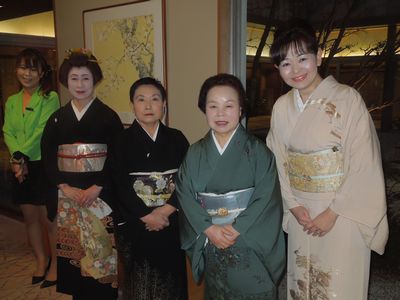
Kamisuwa Geisha, Setsubun 2014
Dances
Kappore かっぽれ
Takeda bushi 武田節
Kiso bushi 木曽節
Kohan bushi 湖畔節
Ina bushi 伊奈節
Shôchikubai 松竹梅 (performed in the new year season)
Tsurukame 鶴亀 (performed at wedding receptions and birthdays)
O-Suwa Takashi お諏訪節
Sukêto bushi スケート節 (Ice skating on lake Suwa)
Kirigamine kouta 霧ヶ峰小唄 (ice skating)
Onhashira kouta 御柱小唄
Suwa ondo 諏訪音頭 (about the beauty of Suwa throughout the seasons)
Okaya kouta 岡谷小唄 (about the Okaya silk industry)
Numbers
1930's ("early Showa period"): 200 Geisha in Kamisuwa
1958: 80
1960's: 300
2006: 3
History
The first Hanamachi on lake Suwa developed in Nawatemachi 縄手町/畷町 in 1903 (renamed to Otemachi 大手町 in 1909). In the following years, a few Ryotei were established. In 1920, the area of Otemachi 1 and 2 chôme was designated as area for Geisha, so Okiya and Ryotei of the neighbouring Izumichô area 和泉町 were moved there. In the early Showa period (1920's/30's), Okiya that were formerly located in Hamamachi also moved to Otemachi.
Kamisuwa had two kenban: Ote kenban 大手見番 and Koyanagi kenban 湖柳見番.
In Shimosuwa 下諏訪, it seems kenban had no specific names.
In Okaya 岡谷, there used to be another Koyanagi kenban 小柳見番 in the Honmachi area.
In Chino 茅野, there were Miyagawa kenban 宮川見番 (current Miyagawacho area), and Eimei kenban 永明見番 (current Nakacho area).
Before the around 1969/70, Geisha of these respective cities did not work in other cities. But with the decline of Geisha numbers, the Hanamachi in Okaya, Shimosuwa and Chino were no longer able to meet the demands of their customers, so it was allowed for Geisha from Kamisuwa to pad those numbers.

Chiyomaru 千代丸 in "Showa Meigiren", 1988
Daily life
Geisha usually practiced their respective arts (such as Narimono, Nagauta, Kouta, dance) until 15:00, afterwards they went to the beauty parlour to get their hair done, put on makeup and change into work clothes. Ozashiki usually lasted for two hours.
Style
In the year 1935, Geisha still wore their natural hair instead of wigs, and their hairstyle changed, depending on rank and age. Hangyoku wore Momoware 桃割れ and Oshidori おしどり. Geisha under 26 years wore Yuiwata 結い綿 or Taka shimada 高島田, no info on Geisha between 26 and 30, Geisha aged 31 and above wore Geiko yui 芸こ結い, tsubushi (shimada?) つぶし, icho gaeshi 銀杏返, and yokai maki 夜会まき.
Around 1955, most Geisha wore short hair or western updos on a daily base and used Nihongami wigs for work.
Becoming Geiko
Three mediators who acted as go-between of Okiya and families/volunteers worked in Kamisuwa. According to Manchiyo, who worked from 1930 to 44 in Otemachi, the daughters of poor farmers and travelling entertainers were sold to the Okiya for 15 yen. When the parents met with the Okiya, the length of the girl's service was decided.
After becoming employed by the Okiya, the girls were doing "odd jobs", while taking lessons in Hanayagi-ryu dance, Shamisen and other arts. It's like Shikomi in Kyoto, although no specific term is named.
When a Hangyoku was ready to become a Geisha, she had to prove her skills in dance or shamisen to a council of dance/shamisen teacher, Okiya owner, senior Geisha, head of the Geisha association and a member of the Kenban. The Okiya spent around 30 yen for an Erikae, while the Geisha had to take a loan of 150-200 yen. If her parents were to borrow money during her time before becoming independent, it was added to her loan. If parents continued to ask for money and the Geisha's debt became too large, they often became prostitutes in order to pay off their debts.
Around 2 years after becoming Geisha, they became "Goshugi tori" ご祝儀取り - they receive some of the money from the Gyokudai, but tips were entirely for them to keep. The next level was called "share" 分け, when 40% of all earnings were her own. When becoming independent from their Okiya, they paid fees for food and being registered at the place. Most Geisha also had a patron after becoming independent, which also lead to most of them retiring before the age of 30.
@gardengeisha yes, this is about Kamisuwa Onsen located in Suwa-gun in Nagano prefecture!
Sources:
https://www.saginoyu.com/blog/10090 (2014)
地方花柳界における〈芸〉と〈色〉諏訪湖沿岸 地域の事例 (2015)
花街文化伝える学校が開校/長野・上諏訪温泉 (2008)
はなあかり: 昭和名妓連 (1988)
40 notes
·
View notes
Photo

かつて居り今も心の離れない街に鋭い眼をした子猫
└マイホームタウン。
【長野県:上諏訪】
#短歌 #写真 #詩 #上諏訪 #kamisuwa #japan #photo
46 notes
·
View notes
Text
Why sake "Arabashi" has the clearest taste.
Why sake “Arabashi” has the clearest taste.
I wandered off to Nagano last time. I didn’t think anything of it and just went as if I was called by someone.
Later, when I told my friends about my visit to the brewery
They said, “I heard that the new sake is almost ready.
I didn’t pay attention to it…
It’s like I’ve been living on luck.
I’ve bought two bottles of the Masumi series.
For starters, I picked up a bottle of “Arashiri Masumi…

View On WordPress
#arabashiri#brewery#crazy#English#geek#home#How to#Japan#Japanese#Japanesesake#Kamisuwa#local#Masumi#Nagano#New#population#restaurant#sake#sushi#Tokyo#tourism#tourists#travel#travels#What#Year#yummy
0 notes
Photo
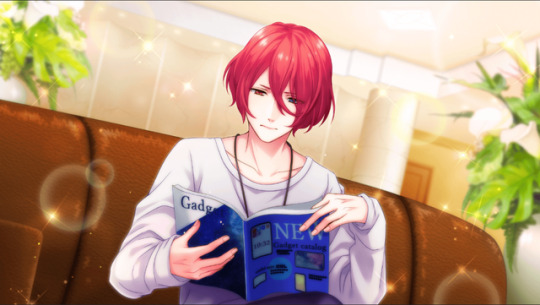

Momotaro Onzai SSR, SSR+ 【Flower Garden】
cr: @kamisuwa
#bproject#bproject muteki dangerous#b project#Momotaro Onzai#flower garden#moons#!! sorry for the lateness on this one!!#also both mods are kinda busy rn kasdhasd sorry we've been inactive#submission
124 notes
·
View notes
Photo

至福の時。 足湯♨️気持ちいい☺️ 〜上諏訪駅の特急🚄待ちのひととき〜 A time of bliss. Footbath ♨️ Feeling good ☺️ ~ A moment of waiting for limited express at Kamisuwa Station ~ #TimeOfBliss #Footbath #♨️ #FeelingGood #☺️ #AMoment #KamisuwaStation #至福の時 #足湯 #気持ちいい #癒される #ひと時 #上諏訪駅 #特急待ち #源泉かけ流し #無料サービス #Japan #nagano #kamisuwa (上諏訪駅) https://www.instagram.com/p/B0fmRMtA9C6/?igshid=o0uae8g0bs3u
#timeofbliss#footbath#♨️#feelinggood#☺️#amoment#kamisuwastation#至福の時#足湯#気持ちいい#癒される#ひと時#上諏訪駅#特急待ち#源泉かけ流し#無料サービス#japan#nagano#kamisuwa
0 notes
Photo
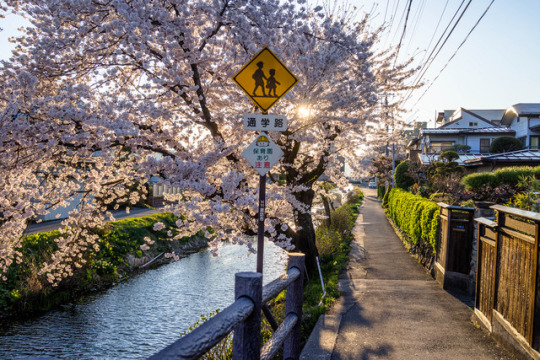
Kamisuwa by ubic from tokyo 長野県 上諏訪 Kamisuwa, Nagano Prefecture SONY RX1 http://flic.kr/p/TyfEYd
8 notes
·
View notes
